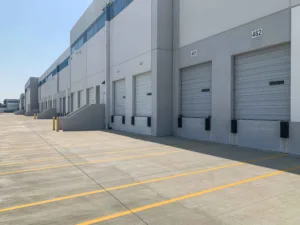
Real estate is an attractive investment opportunity, and one sector you may want to explore is self-storage. Self-storage investment offers significant returns, but it also carries risks. For those who are considering investing in self storage, the key is to create a well-diversified portfolio that takes into account your risk tolerance and financial goals.
In this article, we’ll break down the basics of self-storage investing and provide you with key tips for building a winning portfolio. Whether you’re just getting started or a seasoned investor who wants to optimize your current holdings, this guide will walk you through the process step-by-step. You’ll learn how to evaluate potential investment properties, how to balance risk and reward, and how to make sure your portfolio works for you in the long run.
Identifying the Right Self-Storage Properties
Where you choose to invest is just as important as the type of self-storage unit you buy. Location is a key factor in self-storage’s long-term value potential, and it’s essential to do your research when selecting the right area.
When evaluating an investment, there are some key criteria that you should consider:
- Qualification requirements for self-storage investments typically include a minimum credit score of 680.
- Typical self-storage investment criteria include properties constructed post-1970, and within a 5-mile radius population of 5,000+.
- Financing self-storage investments also require a minimum credit score of 680.
- Self-storage investments should have at least 1 acre of land, with utilities and drainage systems in place.
By taking these factors into consideration and looking for areas with growing population numbers and job growth potential, you’ll be able to identify potential areas for your portfolio that are likely to increase in value over the long term.
Maximizing Your Self-Storage Investment Returns
One of the major draws of self-storage investments is the potential for huge returns. To maximize your returns, there are several important strategies you can use to create a winning portfolio.
First, prioritize selecting properties with maximum net-leasable coverage. This makes sure that your property’s income will be at its highest potential. This can be achieved through prior planning and market research that allows you to successfully forecast demand and minimize pricing risk.
Secondly, consider diversifying your portfolio by investing in more than one facility and balancing it with other investment classes such as real estate investment trusts (REITs), which have seen an astounding 58.89% return year to date in 2021.
Lastly, don’t discount the potential of investing in self-storage facilities—not only do they bring huge income potential, but also offer a lower management cost and high demand compared to most other options in this market, resulting in an average profit margin of around 41%.
Understanding Risk in a Self-Storage Investment Portfolio
When it comes to investing in self-storage, it’s important to understand the risks associated with it—especially if you plan on creating a diversified portfolio. While there are a number of advantages that come with investing in self-storage, there are also risks.
For starters, most state eviction laws favor the tenant which means that a bad tenant can take up residence and make it difficult to get them evicted. This is why having a comprehensive screening process is essential for any investor. It also helps to have a knowledgeable property manager who can handle the day-to-day operations as well as any unexpected complications that may arise.
Another risk to consider is a lack of oversight when selecting investments. It’s easy to find properties that appear to be excellent opportunities on the surface; however, if they’re not managed properly or have underlying issues such as low occupancy or high operational costs, they may not be worth investing in after all. That’s why it’s important to be diligent when researching potential investment opportunities and take steps to fully understand your potential returns before pulling the trigger on an investment.
Finally, even though self storage investments tend to stay strong during economic downturns, there is still an oversupply risk that needs to be taken into account when deciding which properties to invest in and creating a diversified portfolio of investments. Investors should consider Self Storage Real Estate Investment Trusts (REITs) as low barrier-to-entry options but due diligence should still include an assessment regarding oversupply risk.
Diversifying Your Self-Storage Portfolio and Limiting Risk
When creating an investment portfolio, it’s important to diversify and mitigate the risks associated with any single investment. An effective strategy is to diversify your investments across and within asset classes. Self-storage investments can provide a great opportunity for diversification, as they are typically passive income streams – you purchase the property and collect rent with minimal intrusions.
Furthermore, compared to other asset classes, self-storage units tend to have less vacancy risk because this type of investment involves renting space rather than dealing with tenant turnover each time a lease ends. In addition, eviction laws tend to be more favorable for self-storage investments than for other types of rental property.
When building a strong self-storage portfolio, consider:
- Spreading out your risk by buying multiple self-storage facilities rather than one large facility
- Diversifying the location of your units (if possible) to limit risk from regional market downturns
- Structuring each individual purchase according to market terms and your cash flow goals
- Tracking performance metrics like the pace of absorption, occupancy rates, and average daily rates (ADR) to ensure your investing strategy is aligned with current market trends and customer demands
- Staying within your budget and crafting an exit strategy that delivers predicted returns on investment
Assessing the Exit Strategies for Your Self-Storage Investments
It may be an exciting thought to jump right into investing in self-storage, but it pays off, in the long run, to take the time to plan ahead and assess the exit strategies. After all, a five-year fund is still a timeline and investors will want to make sure they get out of their investments when it’s time.
When building a self-storage property, a Phase I assessment should be done beforehand to gauge the property’s historical uses. This is important for identifying any potential environmental issues that could affect returns on investments down the line. Additionally, it’s important for investors to do a “table-top exit plan test” before building each self-storage property, which requires documented scenarios that demonstrate how risks can be mitigated as well as strategies for making sure investors understand their exit plan. By taking on these important steps upfront, investors can ensure their portfolio is well-balanced and prepared for success.
Investors should always have an exit strategy in place that considers the peak performance of the market, as well as the worst-case scenarios. Doing so will give investors the confidence to move forward with the investment and start tracking the progress. Additionally, it’s important to make sure investments are properly insured, both from events like floods and wildfires, as well as from tenant and employee damage. Having proper insurance in place will protect investments, as well as give investors peace of mind that their investments are safely backed up.
Staying up to date with local and national market trends is key. Knowing the current trends can help investors identify which properties to purchase and how long to hold onto the before selling the property to maximize returns. Doing the proper research and due diligence upfront can help investors enter the market with confidence and create a winning portfolio.
Overview of a Winning Self-Storage Investment Strategy
An important part of self-storage investing is having the right strategy. Of course, this strategy will vary depending on your unique needs, but there are a few key components to consider when planning your own self-storage investment portfolio.
Market Analysis
The first step is to carry out a detailed market analysis for the area you intend to invest in. This involves looking at local demographics and researching trends in the industry, as well as carefully weighing up the competition within a certain radius. This is essential in order to ensure that your investment will be profitable and yield positive returns.
Cash Flow Evaluation
Once you’ve chosen your target area it’s time to evaluate cash flows. This involves looking at potential rental income, potential operating costs like utilities and maintenance, and any capital expenditure requirements in order to make your investment attractive from an income perspective.
Risk Management Strategies
Finally, once you have identified the right properties for your portfolio it’s important to develop and implement risk management strategies that will help protect against unexpected losses and help maximize profits over the long term. This could include diversifying investments across multiple locations and property types or setting aside reserves for emergencies. These strategies can help ensure that your investment remains profitable even in times of economic uncertainty.
Conclusion
Investing in self-storage is a lucrative investment opportunity that can offer you a great return on your investments. With it comes to the opportunity to build a diverse portfolio that is well-balanced, has low risks, and offers a predictable stream of income. It’s important to research the markets and locations where you intend to invest and understand the risks associated with each potential property. With proper planning and strategy, you can build a successful self-storage investment portfolio that will deliver a great return on your investments.





